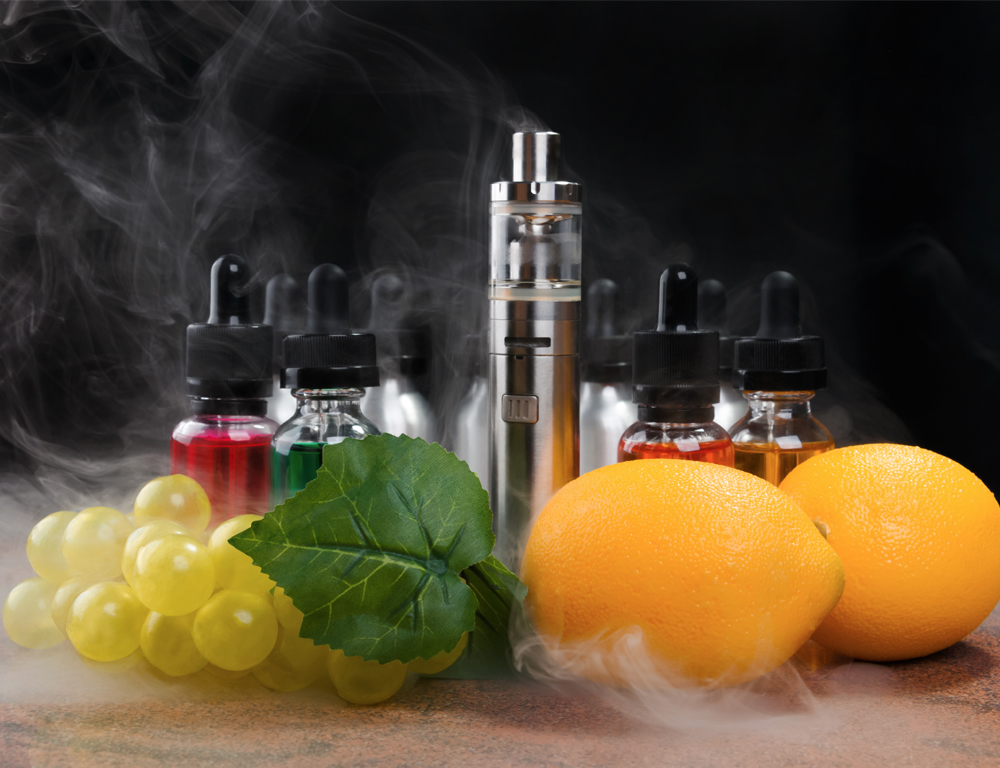Flavor affects free radicals produced by e-cigarettes

The flavor of an e-cigarette may affect more than a consumer's taste buds, according to Penn State researchers who say the chemicals that make up the different flavors also produce different levels of free radicals, toxins often associated with cancer and other diseases.
The researchers analyzed popular e-cigarette flavors and the amount of free radicals they produced, comparing them to e-cigarette liquid with no flavoring. They found that many of the chemicals used to flavor e-cigarettes increased the production of free radicals, while a few actually lowered it.
John Richie, professor of public health sciences and pharmacology, Penn State College of Medicine, said the results are an important step in learning more about the potential dangers of e-cigarettes.
“When these products first came on the market, many people were saying they were harmless and that it was just water vapor,” Richie said. “We know that's not true, but we also don't have the numbers on how dangerous e-cigarettes are. But now we know that e-cigarettes do produce free radicals, and the amount is affected by the flavorants added.”
Free radicals are unstable molecules that can cause damage to healthy cells, and can eventually lead to conditions like inflammation, heart disease and cancer. Consumers inhale these free radicals when they smoke a combustible cigarette.
While e-cigarettes don't give off smoke, they do contain many different chemicals to flavor the e-liquids, which are absent from combustible cigarettes. The researchers said that while the flavorings are approved for consumption, they aren't evaluated for safety when being heated.
“E-cigarettes have a coil for heating the liquid that gets quite hot and may aid the production of free radicals,” Richie said. “It's important to look at the effect of flavors on these free radical levels because e-cigarettes come in hundreds of flavors, many of which are marketed toward kids, like bubblegum.”
The researchers measured the free radicals produced by 50 flavors of a popular brand of e-cigarette and compared them to flavorless e-liquid. They found that about 43 percent of the flavors were associated with significantly higher levels of free radical production, while a few were associated with lower levels.
Next, the researchers broke down the flavors into their individual chemicals to see which ones were associated with higher levels of free radicals. Zachary Bitzer, post-doctoral scholar, said isolating the chemicals was important because flavors aren't consistent across brands.
“Two different manufacturers may sell an ‘orange' flavored e-liquid, but they could each contain vastly different flavorants to get that orange flavor,” Bitzer said. “Just like Coke and Pepsi are both colas but have different ingredients, different flavors of e-cigarettes may contain different flavorants, resulting in different levels of free radicals.”
The researchers found six flavorants that significantly increased the production of free radicals, including linalool, dipentene and citral, which are often used to give products citrus or floral notes. Additionally, the flavorant ethyl vanillin – often used for vanilla notes – decreased the production of free radicals by 42 percent.
Richie said the results could help consumers make better decisions about the products they buy, as well as help policy makers create regulations around e-cigarettes in the future.
“We found that many of these flavorings increase free radicals, but a few decreased them, as well, which raises the possibility that maybe there are things you can add to these liquids that could reduce radical production and might make them safer.” Richie said. “E-cigarettes are regulated by the Center for Tobacco Products in the FDA, and I think these results can be useful to help set guidelines in terms of regulating these products.”
Reema Goel, research associate; Samantha M. Reilly, postdoctoral scholar; Ryan J. Elias, associate professor of food science; Alexey Silakov, assistant professor of chemistry; Jonathan Foulds, professor of public health sciences and psychiatry; and Joshua Muscat, professor of public health sciences, also participated in this work.
The National Institute on Drug Abuse of the National Institutes of Health and the Center for Tobacco Products of the U.S. Food and Drug Administration helped support this research.
If you're having trouble accessing this content, or would like it in another format, please email Penn State Health Marketing & Communications.
